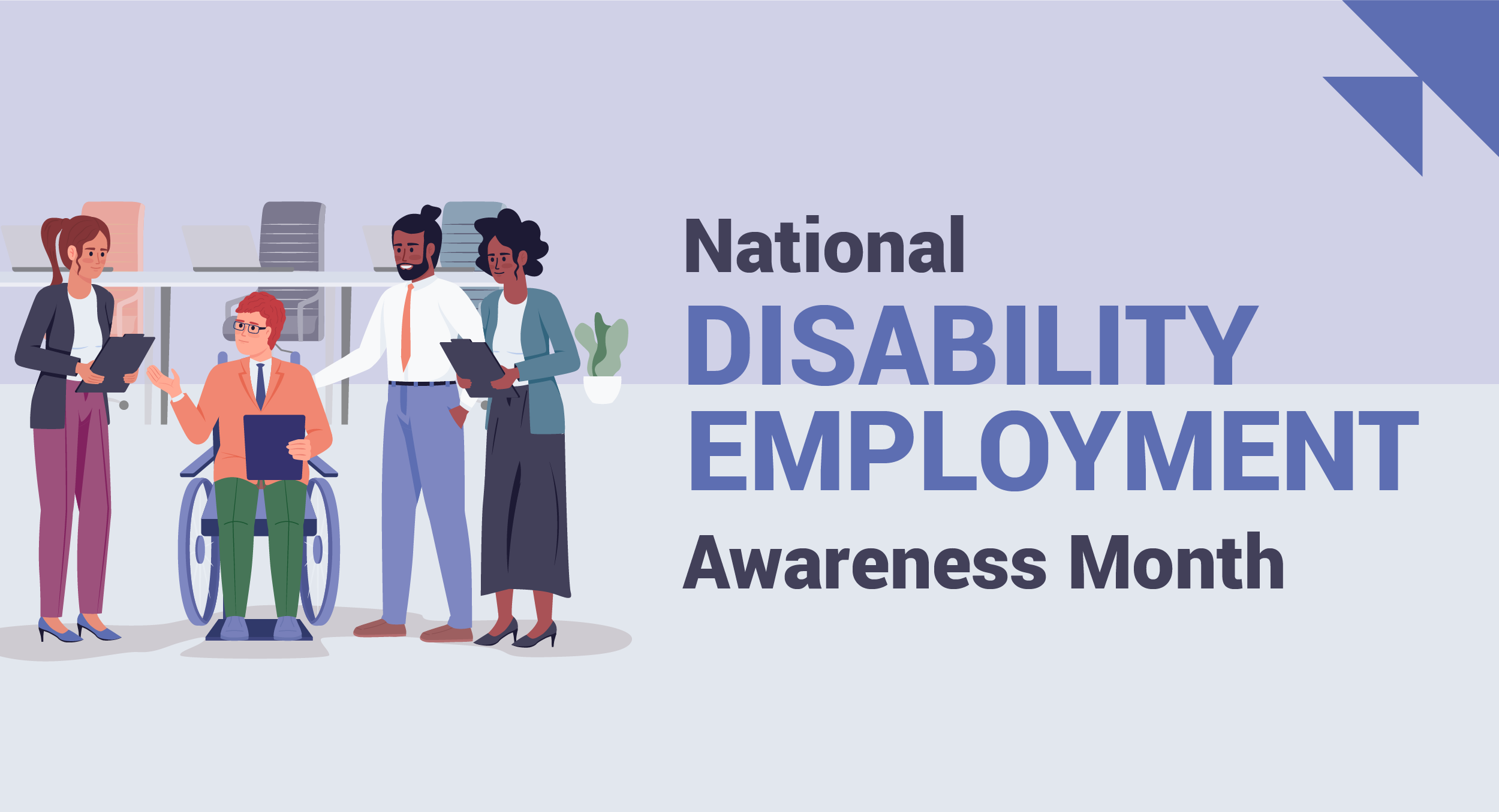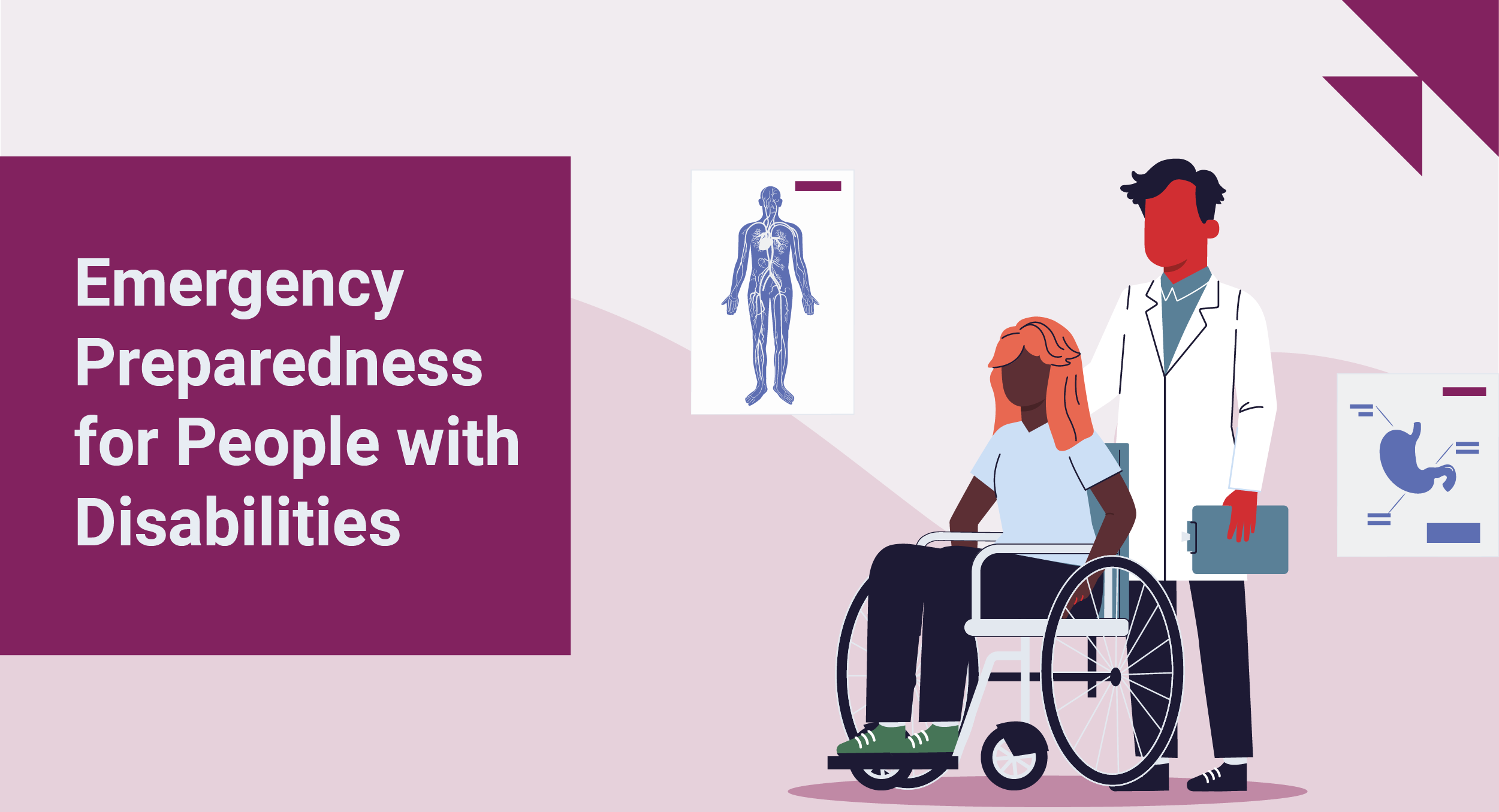October is National Disability Employment Awareness Month
October is National Disability Employment Awareness Month (NDEAM), an initiative started by the Office of Disability Employment Policy (ODEP). The...

We at Relay Resources take pride in our people, with and without disabilities, and in our work. Disability Pride Month is celebrated each July, following the passage of the Americans with Disabilities Act (ADA) on July 26, 1990. This year marks the 34th anniversary of the historic event, which ensures equal rights and bars discrimination for people with disabilities in communication, transportation, employment, and more. The 2024 theme is “We Want a Life Like Yours,” a slogan that urges inclusivity for the disability community.
The ADA was the first disability rights act of its kind in the world, with the movement leading to its passage following a similar path to the civil rights movement, including the use of nonviolent protest tactics. For instance, in 1977 the famous 504 Sit-In took place in San Francisco, where activists Judy Heumann, Kitty Cone, and Mary Jane Owen led the occupation of federal buildings for 25 days. They did so to pressure Secretary of Health, Education, and Welfare Joseph A. Califano Jr. to sign Section 504 of the Rehabilitation Act of 1973, which had yet to be enforced. This legislation paved the way for the larger, historic, and all-compassing ADA in 1990.
.jpg?width=640&height=438&name=unnamed%20(4).jpg) President Bush signing into law the Americans with Disabilities Act of 1990 on the South Lawn of the White House. Photo via Wikimedia Commons.
President Bush signing into law the Americans with Disabilities Act of 1990 on the South Lawn of the White House. Photo via Wikimedia Commons.
The first Disability Pride Parade was held in Boston in July of 1990, when more than 400 people gathered at the Boston Common public park to march, wheel, and celebrate the idea that disabilities are a common part of the human experience. It took some time to catch on nationally, but since then, Disability Pride Month celebrations have spread around the world. The next major city to host a Disability Pride Parade was Chicago in 2004, while the first official Disability Pride Month was celebrated in 2015, the 25th anniversary of the ADA. Since then, U.S. states including California, New York, Pennsylvania, and Nebraska have begun hosting Disability Pride Month events each July.
Similar to how the LGBTQIIA+ community uses its Pride Month to look back at significant milestones in its history each June—including the Stonewall riots on June 28, 1969—so too does the disability community look back to the passing of 504 and the ADA each July in pride of the accomplishments and strides they have made in society.
The Disability Pride Flag is a symbol of inclusion. The original flag, designed by Ann Magill, had brighter colors in a “lightning strike” pattern intended to mimic the zigzagging that people with disabilities had to do to move through the world. It was redesigned to accommodate folks with epilepsy, as the zigzag had a “strobe” effect when viewed on computer or phone screens.
 A “straight diagonal” version of the Disability Pride Flag: A charcoal gray flag with a diagonal band from the top left to bottom right corner, made up of five parallel stripes (going from bottom up; left to right) in red, gold, pale gray, blue, and green. Designed by Ann Magil.
A “straight diagonal” version of the Disability Pride Flag: A charcoal gray flag with a diagonal band from the top left to bottom right corner, made up of five parallel stripes (going from bottom up; left to right) in red, gold, pale gray, blue, and green. Designed by Ann Magil.
The updated flag features stripes and more muted colors; here’s what they represent:
Red stripe: Physical disabilities (cerebral palsy, spinal cord injury, etc.)
Gold stripe: Neurodivergence (ADHD, autism, etc. )
White/pale gray stripe: Undiagnosed and invisible disabilities
Blue: Psychiatric/mental health disabilities (depression, bipolar disorder, anxiety, etc.)
Green: Sensory disabilities (hearing, vision loss)
Diagonal band: Cutting across the barriers blocking disabled people from full access and inclusion
Charcoal black background: Mourning and remembrance for those who’ve faced ableism and violence
While employment for people with disabilities has never been higher, there is still a long way to go: “In 2023, 22.5% of individuals with disabilities were employed, marking the highest percentage since data collection began in 2008,” notes the organization AmeriDisability. “Yet people with disabilities are still three times more likely to be unemployed compared to those without disabilities.”
Relay strives for a world in which individuals can be their authentic selves, which includes feeling comfortable disclosing their disabilities. Companies hire hire people with disabilities outperform those that don’t. By hiring from a more diverse pool of talent and by ensuring the hiring process is accessible and provides accommodations, businesses can create a more diverse workforce. Disability cuts across all race, ethnic, sex, gender, and socioeconomic categories.
If you are looking to hire people with disabilities, be transparent and communicative about hiring throughout the process. Let candidates know what will be involved in the application process and in the training and interview stages. Having an application process that allows for applications to be done in person or with audio/physical/virtual accommodations in place will expand your candidate pool.
Candidates will feel more comfortable disclosing their disability if they see the word “disability” in a diversity statement, or if there are pictures of workers with disabilities on a company website. It’s even better if candidates are made aware of positive outcomes or examples of employees who work there with disabilities. Show them what you have to offer!
This July, let’s celebrate disability and the many accomplishments of the disabled community while also pledging to create an even more accessible and inclusive world for people with disabilities.
Relay Resources offers employment and business solutions for and with people with disabilities; our mission is to cultivate meaningful work for people with disabilities. Learn more about what Relay Resources does here, along with how you can support inclusive workplaces or find employment.

October is National Disability Employment Awareness Month (NDEAM), an initiative started by the Office of Disability Employment Policy (ODEP). The...

When a natural disaster hits, everyone in the community is vulnerable—including those who are disabled. Whether it’s a hurricane, fire, earthquake,...